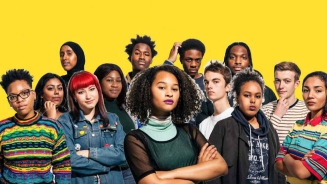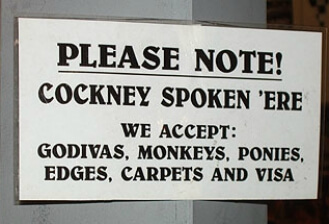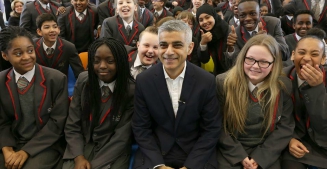Who speaks MLE?

Broadly speaking, it’s the descendants of the original immigrants who are most likely to speak MLE. At the same time, a lot of young people of British origin also grew up in the same melting pot and acquired the features of MLE, even though their parents were native speakers of British English. This is the reason for labelling MLE as ‘multicultural’ - it is a shared way of speaking.
Not all young Londoners speak MLE, but an increasing number have picked up some of the slang, like ‘Yo!’ or ‘whagwan’, without actually speaking MLE. They have probably done this to express a cool, urban youth identity, and maybe to associate themselves with grime music or ‘roadman’ style.
Many young people use MLE not only to express particular identities, but also as their basic accent or dialect - just as someone from Newcastle would speak ‘Geordie’ because that is the local way of speaking. It is the same with MLE. These young people tend to live in less wealthy neighbourhoods, and to have social networks (friendship groups) which are multi-ethnic. A bit later, I’ll return to the issue of ethnicity.
Is MLE replacing Cockney?

On 10th April 2006, London’s Evening Standard made the first ever media reference to MLE - though they called it ‘Jafaican’ (we hadn’t coined the term ‘MLE’ by this stage):
“THE Cockney accent is being pushed out of its heartland by a new kind of speech.
Playgrounds and housing estates of London are alive with the sound of an accent that sounds Jamaican with flavours from West Africa and India.
The Standard can reveal that this new English variety is replacing Cockney in inner London, as more white children adopt the speech patterns and vocabulary of their black neighbours and classmates.
Teachers have dubbed the phenomenon Jafaican and TV’s Ali G would understand it perfectly.”
It is certainly the case that you hear more and more accents similar to MLE in the Cockney heartland of the East End of London, but it very much depends on the person’s age - people born before around 1970 are unlikely to use it, and that is regardless of their own ethnic and linguistic background.
As for today’s young people, it is very much a matter of a person’s social network - who they spend time with. Those with traditional East End roots and who at the same time have close-knit family relations are likely to preserve many of the Cockney features, such as pronouncing words like day a bit like die spoken in a newsreader’s accent (so-called Received Pronunciation). Many can switch into and out of MLE.
In a similar way, young people with Bangladeshi roots, many of whom live in close-knit communities in the East End borough of Tower Hamlets, speak in a way that is similar to MLE but with some Bengali features. At the same time, a number of their white friends pick up some of these pronunciations. Sue Fox has written about this in her book The new Cockney: New ethnicities and adolescent speech in the traditional East End of London.
It’s fair to say that Cockney still exists in the East End, but that its heartland has moved east towards Essex. Partly this is because a lot of people moved there after the Second World War from the bombed-out East End.
So is MLE spoken mainly by Black and Minority Ethnic (BME) people?

MLE’s heartlands are in those parts of London which have seen the highest rates of immigration in the past 50 years. This covers much of East London, but also parts of South and North London. In some boroughs, the White British group comprises less than half the population - down to 35% in some places.
Since MLE is the product of the speech of people whose parents and grandparents were immigrants from places like the Caribbean, India and Africa, where (Standard) English is not generally a first language, it is not surprising that the accent/dialect we now know as MLE is spoken by many people with Black and Minority Ethnic (BME) backgrounds.
In particular, this is true of people of African Caribbean ancestry; their grandparents and parents were the first to arrive from abroad in post-World War II London, so it is not unexpected that they can be said to be in the lead in MLE. MLE has a number of features, especially words, in common with the Caribbean Creole languages which were brought to London - especially Jamaican Creole.
Interestingly, in the late 1960s African Caribbean young people created what the linguist, Mark Sebba, has termed ‘London Jamaican’. This was a version of Jamaican Creole or Patois mixed with Cockney English. It was almost like a secret code to be used against people in authority and as a reaction to discrimination - but it was also very much a marker of their shared experience and identity as young African Caribbeans. London Jamaican is much less widespread now, but it is still used by people who retain strong connections to Jamaica.
The African Caribbeans were later joined by other people from the African diaspora, who came directly from countries like Nigeria, Ghana and Kenya, particularly from the 1980s onwards. Many of today’s grime artists have (direct) African roots, and along with the African Caribbeans they are at the centre of the current London grime music scene, including the pioneer Dizzee Rascal and, more recently, Stormzy, both of whom have Ghanaian ancestry.
Indians, Pakistanis and Bangladeshis came to Britain in sizeable numbers a little before the Africans, in the late 60s. Like them, they formed some of the early speakers of types of language which we would now consider MLE - remember that the evidence suggests that the dialect or accent first came about in the early 1980s, not before.
But MLE is spoken by a much wider range of people - we’ve already mentioned the Bangladeshis, and the same applies to people of all other ethnicities and language backgrounds. This also includes many of the people of White British heritage who grew up in the same areas.
